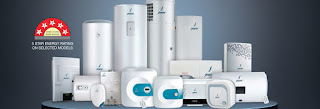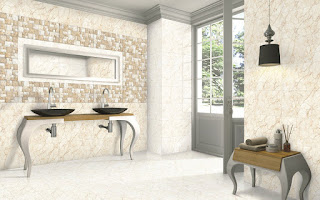ALL YOU NEED TO KNOW ABOUT A WATER HEATER
Winter is coming and you need to get your water heaters back in motion! To battle those biting cold winter days and feel just as fresh as you did during the other seasons, getting the right water heater should be on your agenda.
Back in the day, the concept of a water heater was considered a luxury. Now considered a basic necessity now, a water heater leaves you with the ultimate bathing experience; right from the pressure of the water to its temperature, everything works in sync to enhance that showering time you have been looking forward to all day. More often than not, consumers purchase their water heating system without knowing their requirements or how they work. Some might opt for a water heater rod when in reality, they could go for something eco-friendly such as a solar water heater.
When did water heaters become common?
Back in the late 19th century, the water heater was made using natural gases at home sans any safety features. A few decades later, the safety features were included and adapted to suit most people’s needs. However, it is believed that the 1990s was a turning point in the history of water heaters. Several swanky designs and features came to the fore, including the electric water heater, the solar water heater, and gas water heater. Technology sure has come a long way since then.
The types of water heaters now are endless, each modeled and designed in such a way that they make our lives easier with just a switch to use. Water heaters are considered to be a basic necessity now, surpassing its luxurious tag from decades ago. With several cost-effective, usage, and environmental benefits, the various types of water heaters have only gotten better with the advent of technology which helps create your very-own wellness zone.
A typical water heater working principle:
Ever wondered what goes on inside your water heater? A typical water heater contains a thermostat which helps in controlling the temperature of the water inside the tank. To understand a water heater working principle, one should be familiar with four distinct types of water heaters – tank-type water heaters, tankless water heaters, hybrid water heaters, and point-of-use water heaters. Latest bathroom technologies have made water heating at least four times more efficient!
Different heating brands have different arrangements of their heating principle but the concept, usually, remains the same. In other words, most water heaters work simply by converting the electrical energy into heat through the heating element to raise the temperature of the water to a particular degree. In a typical geyser water heater, two pipelines would be connected – one for the inlet of cold water and the other for the outlet of hot water.
The water tank contains heating elements that are handled by thermostats. The idea behind a thermostat is to set the temperature to a particular amount so that the water is not heated beyond that amount. The tank would be covered with an insulating material, with the whole assembly inside a metal casing which is typically fitted onto a wall. A sacrificial anode is placed so that it saves the tank from corrosion and thus, increases the life of the tank.
Maintenance of a water heater:
Did you know that 18% of your home’s energy use is owing to water heating? You can reduce your hot water energy consumption by using maintenance strategies and opting for more energy-efficient water heaters to reduce your water heater bill.
Once you understand the whole water heater construction, it’s easier to understand how it ought to be maintained. However, be warned that you shouldn’t fix your water heater yourself with half-knowledge. It can be extremely dangerous and, sometimes, you could exacerbate the issues.
Instead of purchasing a new water heater each time your geyser conks off, you can simply follow easy methods to maintain its functions. More often than not, a water heater working principle could result in the sedimentation of rust and other particles settling at the bottom of the water tank. These sedimentations could make it difficult for the water to heat up more efficiently. So ensure that the tank is cleaned off such dirt and particles annually and drain out the sedimentation.
While cleaning up your water heater, ensure that you know what kind of water heater construction you have. Locate the heating source and then gather supplies for its yearly cleanup.
For the cleanup, you will need protective gloves, a hose, a bucket, and a wiping cloth. Turn off the power. Once you turn off the heating source and water pump, you can get to work.
Another commonly used maintenance tip is to insulate the heater and the pipes as it prevents condensation during hotter temperatures, thus preventing any further damage.
Get a thermostatic mixer, a smart bathroom technology that helps in saving you water, energy, and has lesser maintenance work.
Replace anode rods to increase the life of storage water heaters and increasing their frequency.
Ultimately, understanding a water heater working principle isn’t as complex as most would imagine. You needn’t be an expert to understand the functions and work on its maintenance. For the right water heater, go for only the best which saves you time, money, energy and is a remarkable design. Head out to Jaquar for quality water heaters that cater to your heating requirements.



Comments
Post a Comment